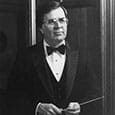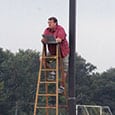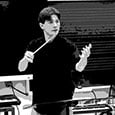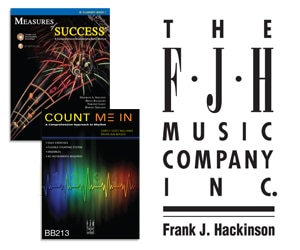One of the best articles we have run over the past 79 years is Donald Hunsberger’s March 1992 profile of the legendary Eastman trombone teacher, Emory Remington, who some students called The Chief. In this brief excerpt, Hunsberger and other former students recall the sound of the trombone choir Remington created and his masterful approach to teaching. As we prepare for our 80th Anniversary Issue in August, we look forward to sharing more gems with our readers.
Trombone Choir
Gordon Cherry: For those of us who experienced it, the sound and feeling of the trombone choir never will leave our hearts and minds. Picture if you will, about 30 young men and women from all parts of the continent and every background. We took places assigned by the Chief in a semi-circle based on seniority and ability, and began to play five or ten minutes of the Remington routine in unison, with the Chief singing in his unmistakably sweet, but slightly raspy voice. You could tune an orchestra with that voice. If there ever was a discrepancy in tuning, it had to be you.
We proceeded to a chorale, usually Bach; Bach was his meat and potatoes, the backbone of every rehearsal and concert. Bach’s music was Remington’s training vehicle for the choir, the perfect composer to convey his concept of the trombone and how it should sound. Bach’s chorales and fugues were our daily bread for his three Ts: tone, tuning, and technique. The chorales built tone, tuning, phrasing, and technique; the fugues were for technique, rhythm, and ensemble.
The Chief projected his sound concept during every moment of his music making and teaching. This concept was song, plain and simple. He detested the stereotype of blatting unmannered trombone, so much in vogue at the time. The trombone was his chosen vehicle to reproduce the beauty of the human voice. His concept of the trombone was a rich, sonorous, and expressive instrument capable of nothing less than any orchestral instrument.
The Teacher
Donald Hunsberger: The personal relationship between a teacher and private students is a delicate balancing act involving stimulation, guidance of native talents, support, and an awareness of the student’s state of self-doubt. Traditionally some teachers bully or harass students into achieving goals, risking the future self-worth of students driven by fear. Emory Remington’s teaching centered around the relationship between him and his wife, Laura, and young trombonists fortunate enough to study with him.
His personal support was strong and unwavering, yet from the student’s perspective it was a fragile relationship. The slightest reprimand from him or the feeling that we had failed him was devastating; what a relief it was to feel that we had eventually regained his respect. Again, the words of his former students are powerful.
Gary Good: He worked with me as diligently as with his greatest
trombonist. Whenever I find myself impatient with someone, Emory Remington’s patience reminds me of the hidden talents to be nurtured in each of us.
Ronald Cox: Mr. Remington demonstrated a great respect for an individual’s dignity. He seemed to attend just about every performance of students in recitals or ensembles, and seemed to find the time to be encouraging to students from any department. He never chastised me verbally if a lesson was underprepared. If he was not quite satisfied, he’d put a question mark over the top of the page and gently say, let’s sightread, Spike.’ Once, only once, did he ever stop singing. I have never felt so alone and swore that this would never happen again. I still sing along with my students.





